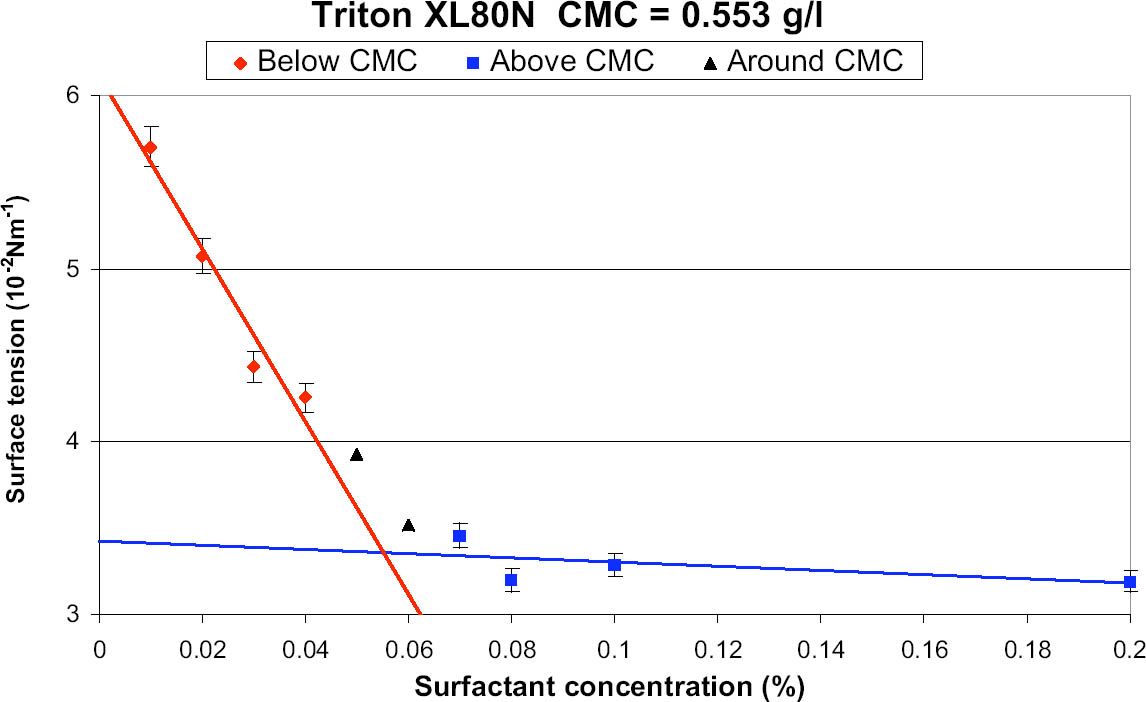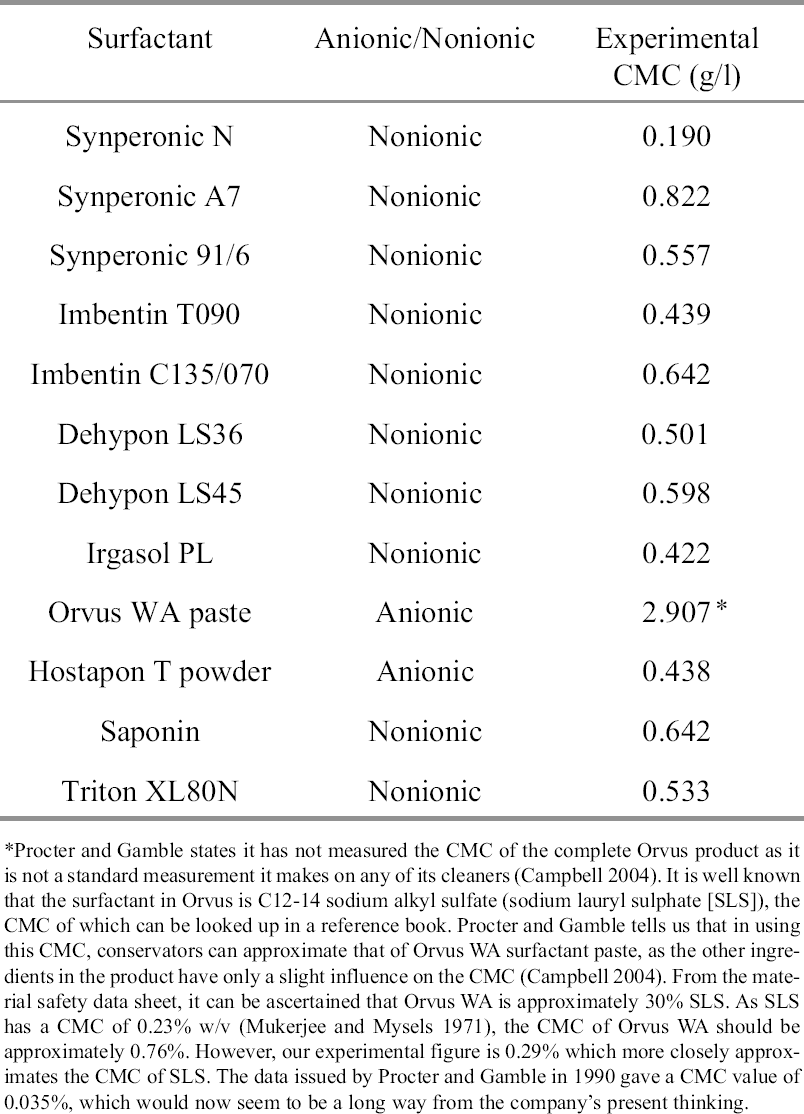FINDING SUBSTITUTE SURFACTANTS FOR SYNPERONIC NJOHN A. FIELDS, ANDREW WINGHAM, FRANCES HARTOG, & VINCENT DANIELS
4 SELECTION OF SURFACTANTS FOR TESTINGAfter consultation with conservators and the conservation literature, a list of surfactants suitable for testing was compiled by a working group that included the authors and two other members of the conservation department at the British Museum. Dr. Judy Daniels (Uniqema) advised on alternatives from the new Synperonic range. The initial list of 24 alternative surfactants was reduced to 11 with due consideration given to availability and the technical literature. The cleaning efficiency of distilled-water solutions of these 11 surfactants and Synperonic N were determined experimentally using distilled water as a control. The pH and conductivity of the wash liquors were also monitored.
4.1 EVALUATION CRITERIAAlong with its availability and expense, the other main factors that should be considered include efficiency of cleaning and residue (Hofenk de Graff 1968; Timar-Balazsy and Eastop 1998). 4.2 EFFICIENCY OF CLEANINGInitially the cleaning power of detergents is the most important consideration. The detergent should be capable of removing common dirt types and solubilizing waxes and greases. The efficiency of soil removal can be investigated by measuring the brightness/color of the samples before and after washing. 4.3 RESIDUEThere should be no residue of detergent deposited on the surface of the textile. To achieve this result, detergents with low fiber affinity are used, although this quality often reduces washing efficiency. Residues may be directly observed using scanning electron microscopy or measured quantitatively using time-of-flight secondary ion mass spectrometry (Howell and Carr 2000). These techniques were not used in this study, as we were not directly interested in determining the actual residues on the textile. Instead, the levels of water-soluble acids and ionic species were monitored by following the pH and conductivity of the wash water. |

